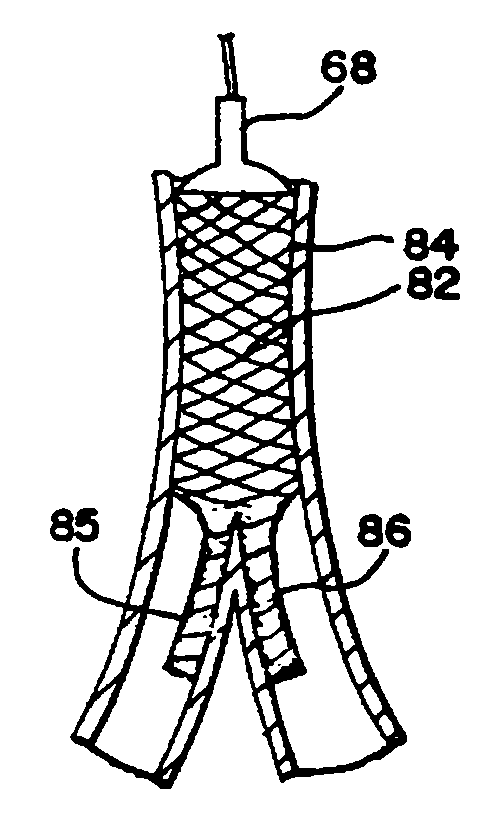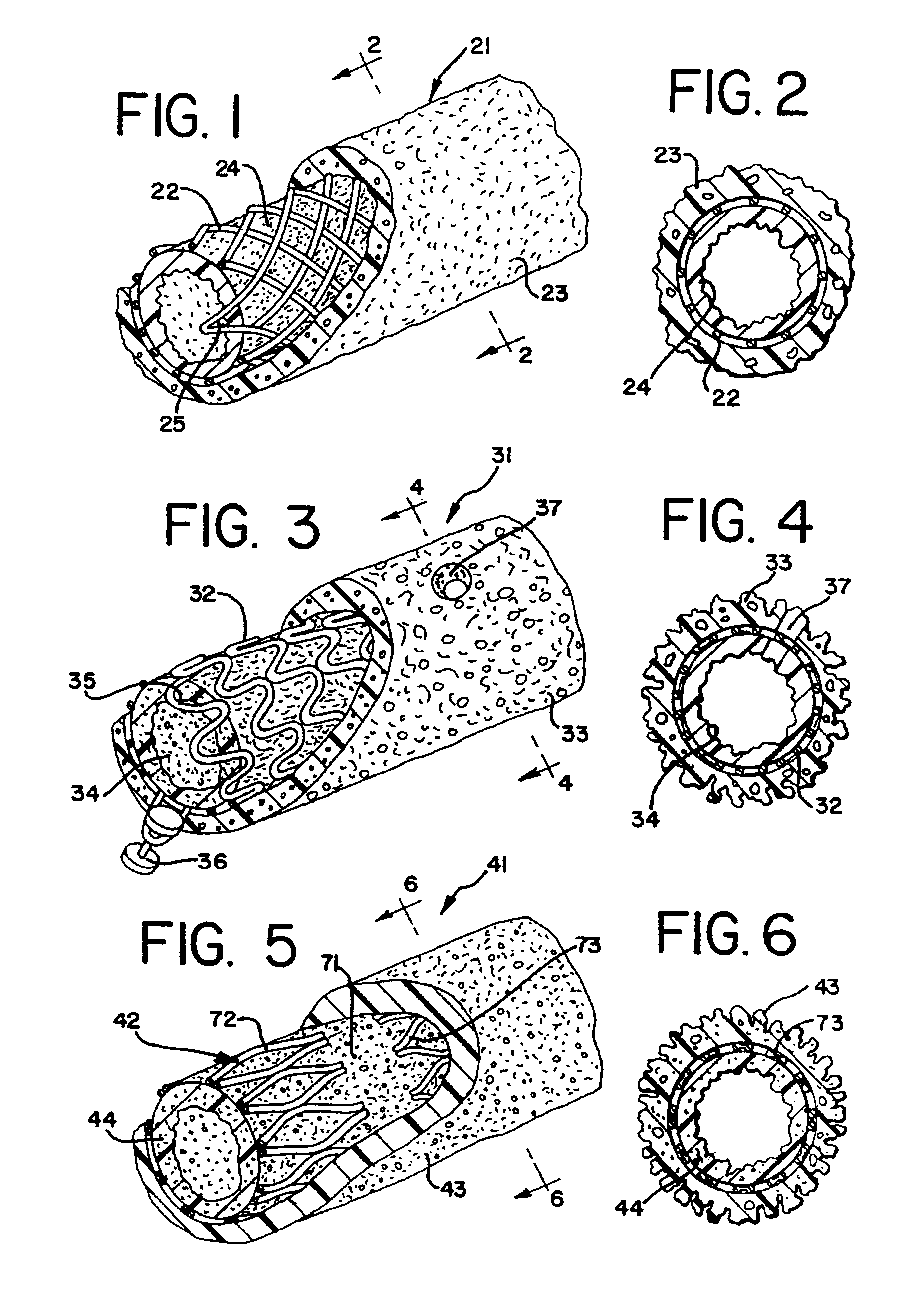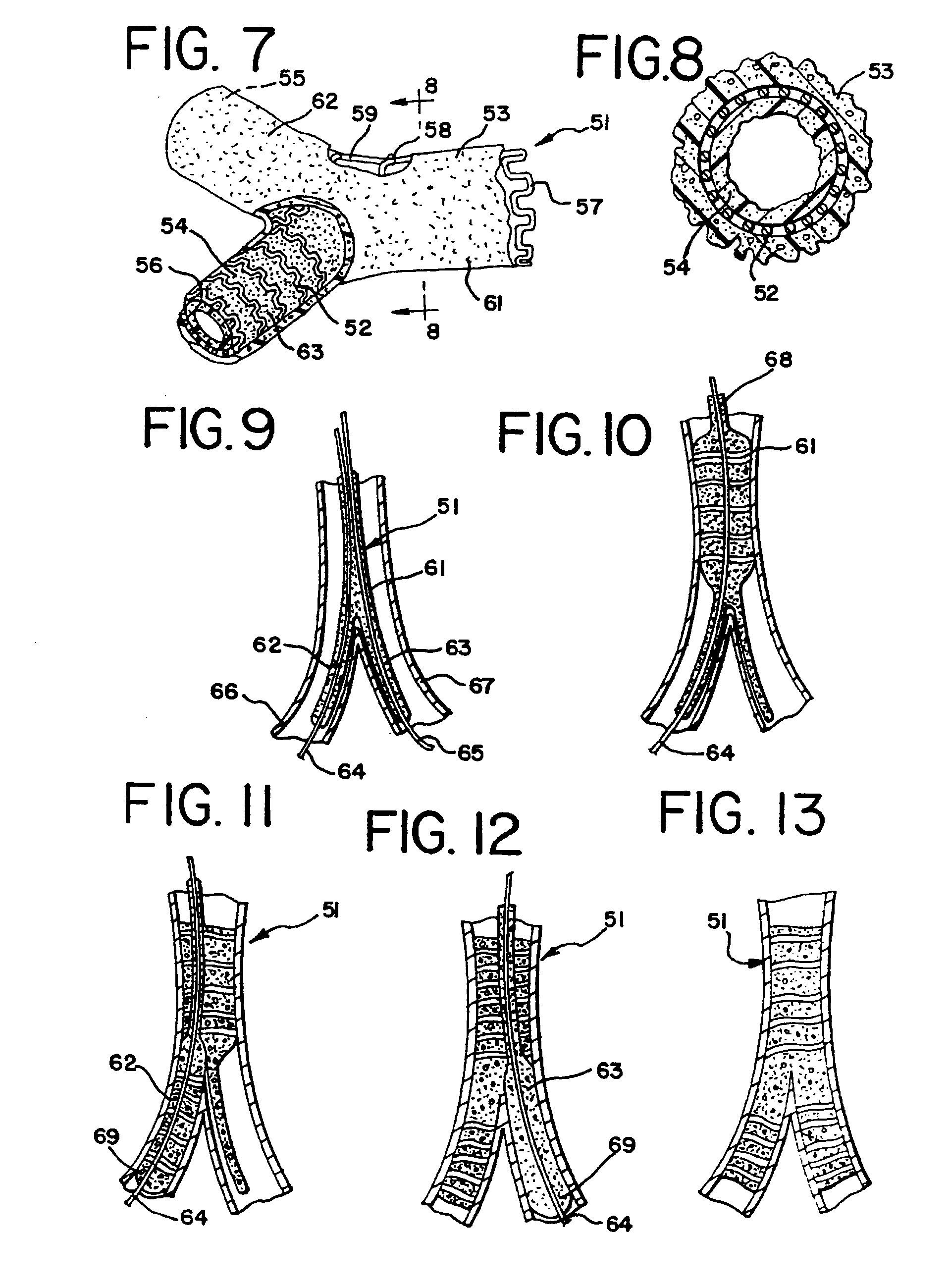Expandable supportive branched endoluminal grafts
a branching, supportive technology, applied in the field of supporting endoluminal grafts, can solve the problems of compromising the patency of the primary vessel and/or its branches or bifurcations, undisciplined cell development, and rapid development of cellular hyperplasia, and achieve the effect of facilitating good tissue ingrowth
- Summary
- Abstract
- Description
- Claims
- Application Information
AI Technical Summary
Benefits of technology
Problems solved by technology
Method used
Image
Examples
example i
[0105]This example illustrates the formation of a branched expandable supportive endoluminal graft having an expanded internal diameter of 10 mm and which is bifurcated to accommodate two endoluminal supportive graft legs of 5 to 7 mm in diameter. A liner of non-woven polycarbonate urethane (Corethane®) was spun by winding over a mandrel, generally in accordance with U.S. Pat. No. 4,475,972. In this instance, the liner consisted of approximately 400 layers of fibers. A bifurcated braided mesh tubular supportive component made in a fixture as illustrated in FIG. 26 was spray coated using a dilute solution of polycarbonate urethane having a hardness grade and a melting point lower than that used to spin the liner. It was allowed to dry with warm air. Several spray coats allow for the formation of an adhesive layer.
[0106]The previously prepared polycarbonate urethane liner was cut to length and placed inside the adhesive-coated bifurcated braided mesh and seated to closely fit the bifu...
example ii
[0108]The procedure of Example I is substantially repeated, except the liner is a double tricot polyester mesh net. In a similar arrangement, a trunk component of the same structure was formed, except prior to insertion of the supporting mandrel, a second, innermost liner of polycarbonate urethane is positioned in order to provide a double-lined branched component.
example iii
[0109]The procedures of Example I and of Example II are generally followed, except here the expanded inner diameter of the trunk component is 25 mm, and the cylindrical leg endoluminal grafts are 12-15 mm in diameter.
PUM
 Login to View More
Login to View More Abstract
Description
Claims
Application Information
 Login to View More
Login to View More - R&D
- Intellectual Property
- Life Sciences
- Materials
- Tech Scout
- Unparalleled Data Quality
- Higher Quality Content
- 60% Fewer Hallucinations
Browse by: Latest US Patents, China's latest patents, Technical Efficacy Thesaurus, Application Domain, Technology Topic, Popular Technical Reports.
© 2025 PatSnap. All rights reserved.Legal|Privacy policy|Modern Slavery Act Transparency Statement|Sitemap|About US| Contact US: help@patsnap.com



